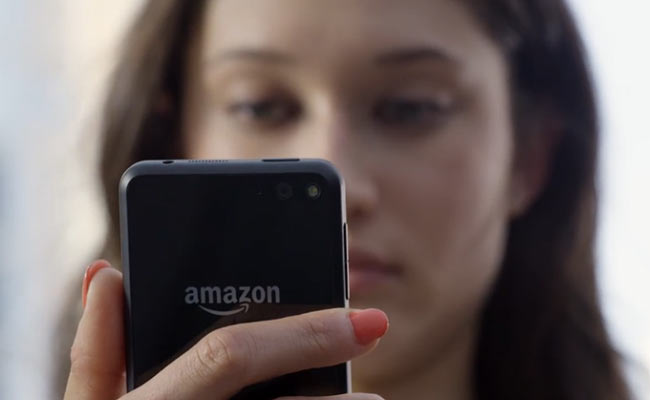Amazon CEO Jeff Bezos is placing big bets on the new Fire Phone. But the first challenge is to get the Fire Phone in the hands of customers already addicted to other smartphones like the iPhone.
Since its introduction in June, Amazon’s new gadget, the Fire Phone, has drawn lots of skepticism on whether the phone is offering enough functionality to win over users of Apple and Samsung. Although frequent online shoppers may find the device’s unique integration with Amazon’s services convenient, the phone’s relative lack of ecosystem support and higher-than-expected pricing could be barriers too hard to overcome.
Contrary to Amazon’s low-price strategy with its tablet Kindle Fire, which, the company’s CEO Jeff Bezos said, was sold at cost to promote digital content sales, the Fire Phone is not much cheaper than its competitors like the iPhone or the Galaxy S series. Although the Fire Phone’s operating system is Android-based, it is not connected to Google Play, but the Amazon app store, where apps like YouTube, Google Maps and The New York Times are not available.
So can the Fire Phone replicate the success of Kindle? Or can it help boost sales of Amazon’s goods and digital content as it’s designed to? We posed these questions to Pradeep Chintagunta, the Joseph T. and Bernice S. Lewis Distinguished Service Professor of Marketing from the Booth School of Business at the University of Chicago.
Chintagunta, who has followed Amazon closely since its launch, says that the company didn’t adopt a marketing strategy that he thinks is a logical starting point to promote the Fire Phone. He also shares his views on what Amazon is trying to become as the company diversifies its businesses across various sectors.
Q. The Kindle was phenomenally successful in transforming how a product is consumed. Do you think that the new Fire Phone can rise up to the challenge of the same success?
A. I think the Fire phone is entering a category at a very different time than when Kindle did. When the Kindle entered the market, the only e-reader that was available was the Sony PRS, which had been around for a long time before then. But Sony wasn’t really doing much in terms of pushing that platform forward, partly because it didn’t have that kind of ecosystem that Amazon had access to. The ecosystem that Amazon had access to was all these sellers of books and magazines that were trying to market on the Amazon even prior to the launch of the Kindle. So when they were able to come up with a Kindle, they were able to combine the benefits of the hardware with the ecosystem that they had access to, to then provide some value to the end customer.
In Sony’s case, the best that they could provide was a limited selection of books for which they could get copyright that consumers could then download onto their readers, which essentially gave them a limited amount of access to material and content, which is so important for people to want to continue using a device like that.
Now with the Fire Phone, I think Amazon is entering at a much later point in the lifecycle. Cell phones are well established and furthermore, the category of the smartphone itself seems to be maturing at this point. Entering at this point of the lifecycle I think is going to be a lot more challenging for Amazon, because they have to provide a value proposition which will tell the customers that they should now switch from the existing smartphones to the new Fire Phone. It’s not clear whether the value proposition that’s available is going to be adequate to overcome the current favorite smartphones that customers have. I think conditional on having a phone, is it is going to be useful. I absolutely think that is the case. Because what they can then do through the technology embedded in the phone is that they can bring the store to the customer. So the customer who wants to be engaged in routine shopping can do that if they want.
But that is only conditional on you having the phone. The key challenge for them is going to be how to get the phone in the hand of the customer.
My initial expectation was that they would discount the phone heavily for their current customers who were already on the Prime service (Note: Amazon Prime is a premium membership service available in select countries which offers free two-day shipping for a flat annual fee and discounted one-day shipping rates; it also offers exclusive benefits in streaming video and music). [That’s] because there are a lot of benefits that Prime customers get, which might make it worthwhile for them to use the phone for a lot of other things which they might end up doing. So my initial thought was maybe they will somehow combine the phone with the Prime service to then provide a bundle to their prime customers to make it more attractive for them to shop to a greater extent on Amazon. But that is not what they ended up doing. I think the jury is still out as to how successful this is going to be.
[Watch the video below]
Q. How should they go about marketing the phone?
A. I think some kind of coordination between perhaps first targeting the Prime customer because these customers have already shown that they are big shoppers on Amazon, they are someone who want to watch the shows that Amazon produces, the goods and services that Amazon provides. So given the fact that they are already big buyers on the Amazon platform, I would think it makes sense to first get the phone into their hands. Once they have started using the phone, perhaps they can work off of things like social interactions that these people have with their friends and other folks. They can somehow communicate the value proposition more effectively to them. Because for Amazon to convey this value proposition to people who have never shopped extensively on Amazon is going to be a big challenge. [Maybe] someone who is a heavy user of Amazon and its services might do a better job communicating the advantages and benefits of having the phone. So perhaps we’ll get to the point where they initially start off with these Prime customers and then migrate to other customers using or leveraging the network effects from these customers.
Q. Recently The Economist wrote a cover story titled ‘How far can Amazon go?’ which partially looked at what the company is trying to become. What are your thoughts on this question?
A. I’ve followed Amazon right from the start and I think a lot of people in the beginning saw Amazon largely as a purveyor of books. It was clear to me at that time that it wasn’t what they were aiming to do. Just being a bookseller online did not make much sense. Being the go-to place for any kind of shopping has essentially made them the supermarket of the world. That part, they have accomplished very well. Beyond that, I think it’s harder for me to see what the people inside the company are seeing.
I think the CEO is looking at adjacencies to the current business model in a very different way than we might look at adjacencies. Thinking about technologies like drones—clearly it’s an adjacency from the perspective of thinking of ‘how do I get the product as quickly as possible into the hands into the consumer?’ From that perspective, I do think of drones as adjacent to their current way of doing business. But when we evaluate the business, which is largely retail business, it’s hard for us to think of drones as an immediate adjacency. So there is something clearly that the company knows that we just don’t know. The way they look at how different businesses interact is not something that is easy for us to see where they might be headed. I do think that they have at least been faithful to the model of ‘let’s make sure that we are the largest provider of all kinds of goods online’.
Now they have moved away from just physical goods to information goods as well. That’s a transition which a lot of people might not have predicted, which is moving to movies, music, etc., online. But moving to that adjacency is not such a far cry to think of them going to cloud services, because ultimately these things have to reside somewhere and the cloud seems to be a natural place for these things to reside. But being on the outside, I think it’s very hard for us to take many steps beyond where they currently are, not knowing what they view as an adjacency as opposed to what we might think of as an adjacency.
(To read about Pradeep Chintagunta’s views on Facebook’s recent social experiment where it altered the news feeds of 700,000 users, click here.)
This interview is from the 2014 China-India Insights Conference which was co-sponsored by CKGSB’s Customer Information Management Center and the China India Insights Program (CIIP) of the Center for Customer Insights at the Yale School of Management.
(Photo courtesy: www. amazon.com)





















